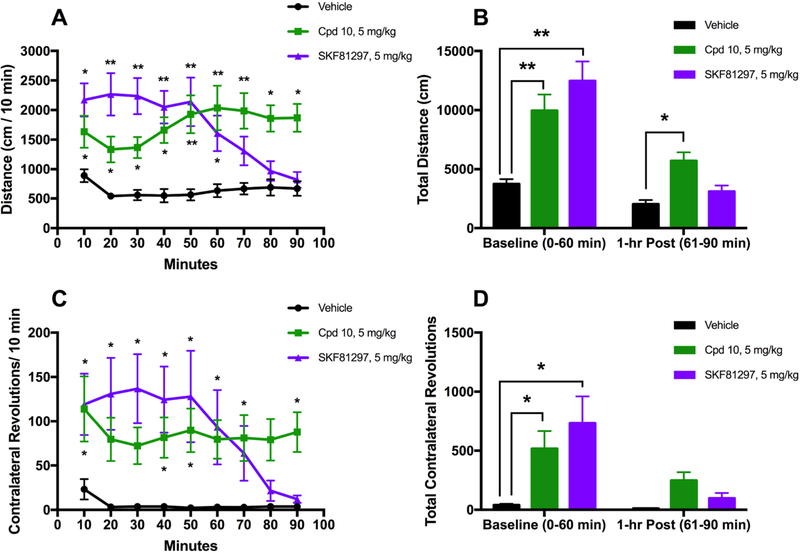Figure 14.
Compound 10 displays a potent antiparkinsonian-like activity in a motor activity study in 6-OHDA-lesioned mice. 6-OHDA-lesioned mice were given the vehicle, 10 (5 mg/kg), or SKF81297 (5 mg/kg) intraperitoneally and monitored for 90 min. (A) Locomotor activities are shown as binned 10 min intervals. The repeated measures analysis of variance (RMANOVA) are provided: [time F(8, 224) = 3.17, p = 0.0020; treatment F(2, 28) = 12.42, p = 0.0001; time by treatment F(16, 224) = 7.825, p < 0.0001]. (B) Cumulative locomotor activities from the 0–60 and 61–90 min intervals. A RMANOVA found: [prepost F(1, 28) = 89.06, p < 0.0001; treatment F(2, 28) = 12.42, p = 0.0001; prepost by treatment F(2, 28) = 17.42, p < 0.0001]. (C) Contralateral rotation activities are shown as binned 10 min intervals. The repeated measures analysis of variance (RMANOVA) are provided: [time F(8, 224) = 5.23, p < 0.0001; treatment F(2, 28) = 5.482, p = 0.0098; time by treatment F(16, 224) = 4.212, p < 0.0001]. (D) Cumulative contralateral rotation activities from the 0–60 min and 61–90 min intervals. A RMANOVA found: [prepost F(1, 28) = 18.52, p = 0.0002; treatment F(2, 28) = 5.482, p = 0.0098; prepost by treatment F(2, 28) = 6.013, p = 0.0067]. N = 10–11 mice/group; Bonferroni-corrected pairwise comparisons—*p < 0.05, **p < 0.0001.

